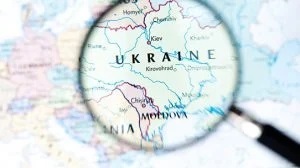Conflict in Ukraine remains the top geopolitical risk for investors but there is a chance this is being underestimated as the war drags on, according to Newton macro and geopolitical analyst Richard Bullock. Meanwhile, he says tensions between China and the US, and China and Taiwan, should also occupy investors’ thoughts, albeit the outlook on this front appears more sanguine.
Bullock says he is concerned the market has become complacent about the associated risks stemming from Russia’s invasion of Ukraine, largely because energy prices have come down1, grain supplies have continued to flow2, and the war has settled into somewhat of a battlefield stalemate.
“But I think as western support continues to pour into Ukraine in the form of more offensive weapon systems and Russia’s finances become more impaired from the oil sanctions, a Ukrainian breakthrough could be highly escalatory and cause volatility for risk assets, including energy, agriculture and European equities,” he adds.
Bullock also thinks the market is unprepared for a potential attack on western energy infrastructure in retaliation for what Russia sees as America’s role in attacking the Nord Stream pipeline3.
“Ultimately, Russia and Ukraine have to find a way to the negotiating table,” Bullock adds. “China made initial steps to broker that, but it is not clear to me this can occur without significant further geopolitical volatility.”


